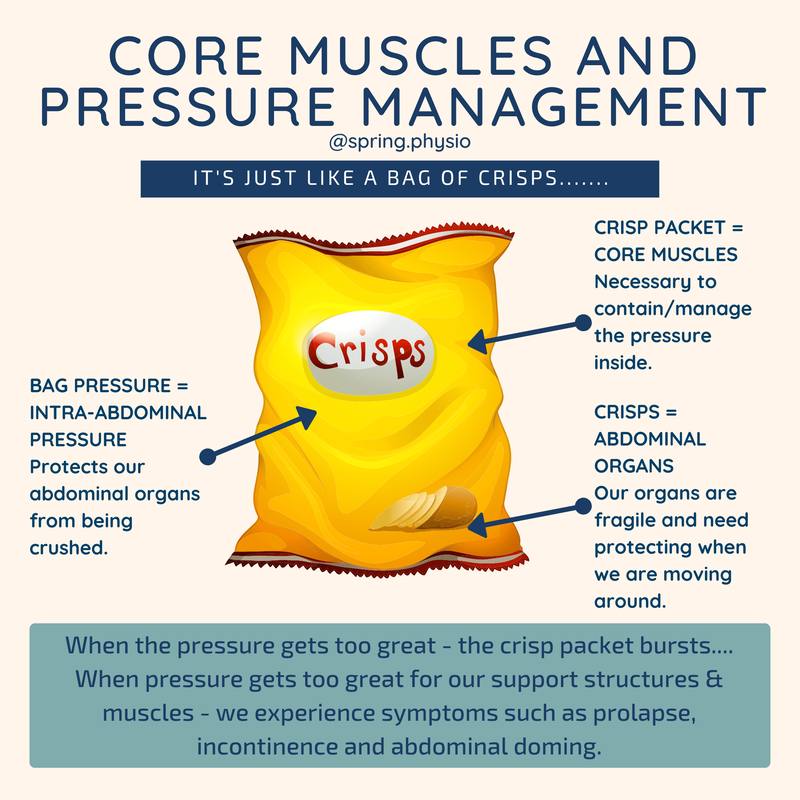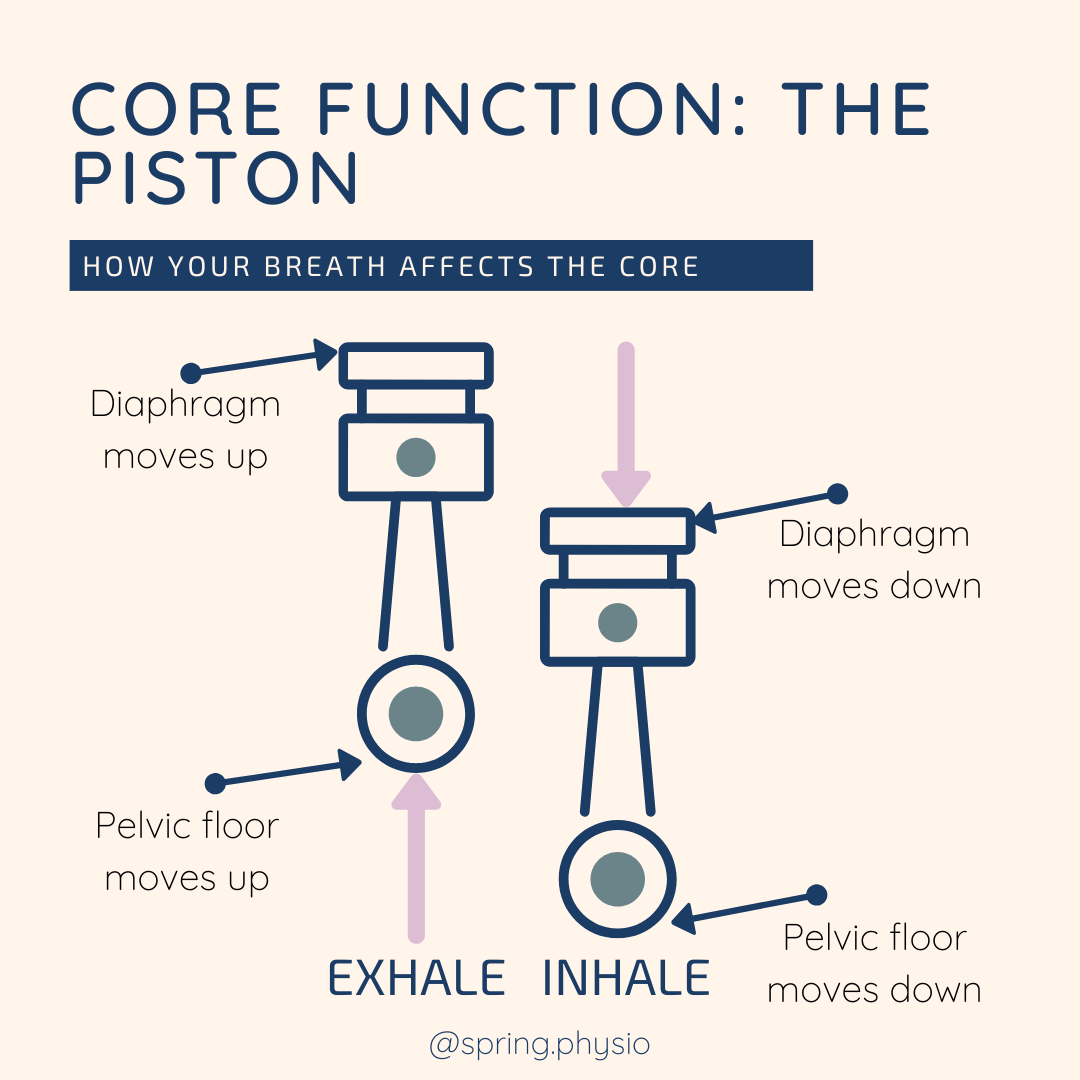|
I use this analogy all the time in clinic to help patients understand the importance of managing their pressure to help improve core/pelvic floor symptoms. Pelvic floor symptoms such as prolapse and incontinence tend to be worse in high pressure situations, when the crisp packet (the core) is overwhelmed.
Breathing is an easy way to reduce pressure. If we exhale rather than hold our breath on exertion, there is less pressure being held "in the crisp packet" that has to be managed by the core muscles. If you have symptoms on a particular activity - such as running/HIIT or cross fit, see your local women's health physio. They will be able to modify your activity to better manage the pressure you are producing with that activity.
0 Comments
The piston analogy originally comes from Julie Wiebe. It is a great analogy to help patients understand how their core relates to their breath. As you exhale, your diaphragm and pelvic floor are naturally shortening - the piston is moving up. Performing a pelvic floor and core contraction on the exhale makes it much easier to engage the muscles, because you are joining in with the natural movement of the core. When you inhale, your diaphragm and pelvic floor move down to help make space for the lungs tor fill with air - the piston is moving down. Trying to contract the pelvic floor on inhale is much more difficult, because it goes against the natural direction that the muscles are moving in. For this reason core exercises are performed on the exhale.
|
AuthorClaire is a women's health and sports Physiotherapist. She is the owner of Spring Physio and is based in East Sussex. Archives
April 2024
Categories
All
|



 RSS Feed
RSS Feed